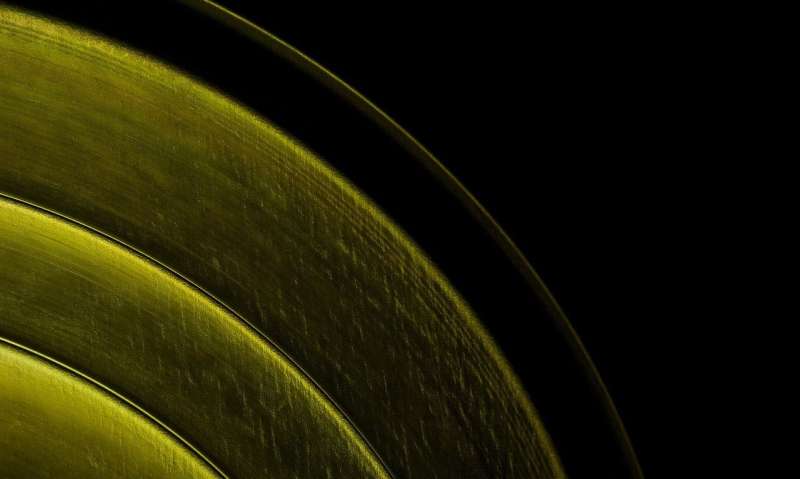Hope for a new permanent magnet that's cheap and sustainable

Scientists have made a breakthrough in the search for a new, sustainable permanent magnet.
Most permanent magnets are made from alloys of rare earth metals—but the mining and processing of these materials produces toxic by-products, leading to ecological challenges around rare-earth mines and refineries. At the same time, demand for permanent magnets is increasing as they are a common component in renewable energy, consumer electronics and electric-powered vehicles.
A team of scientists, led by the University of Leeds, has made a breakthrough in a new advanced material which may eventually replace rare-earth-based permanent magnets. The researchers have developed a hybrid film from a thin layer of cobalt, which is naturally magnetic, covered with molecules of Buckminsterfullerene, a form of carbon.
The presence of the carbon dramatically boosted cobalt's magnetic energy product, a measure of the strength of a magnet, by five times at low temperatures.
The findings have been published in Physical Review B.
The research team observed the increase in magnetic strength at minus 195 degrees Centigrade, but they hope by chemically manipulating the carbon molecules, they will be able to get the same effect at room temperature.
Dr. Tim Moorsom, co-principal investigator from the School of Physics and Astronomy at Leeds, said: "This is the first indication I have seen that a rare-earth-free magnet could compare to something like samarium cobalt, a rare-earth-based permanent magnet.
"While we have only seen this effect at low temperatures thus far, I am hopeful that a hybrid magnetic material similar to this will one day replace rare earth permanent magnets, helping to mitigate the environmental damage they cause."
Although carbon is not magnetic, the way the molecules bond to the cobalt surface causes a magnetic pinning effect, which prevents the magnetism in the cobalt from changing direction, even in strong opposing fields. This surface interaction is the key to the unusually high magnetic energy of the hybrid material.
While it may be a long time before hybrid magnets are ready to be used in wind turbines or electric cars, there are other applications which are closer at hand.
Dr. Oscar Cespedes, co-principal investigator, who is also at Leeds, said "Although room temperature applications in bulk permanent magnetism may be a long way off, the use of molecular coupling to tune the magnetic properties of thin films, for example in magnetic memories, is a tantalising prospect that is within easy reach."
More information: Timothy Moorsom et al. π -anisotropy: A nanocarbon route to hard magnetism, Physical Review B (2020). DOI: 10.1103/PhysRevB.101.060408
Journal information: Physical Review B
Provided by University of Leeds





















